Flying with a Psychiatric Service Dog for the First Time
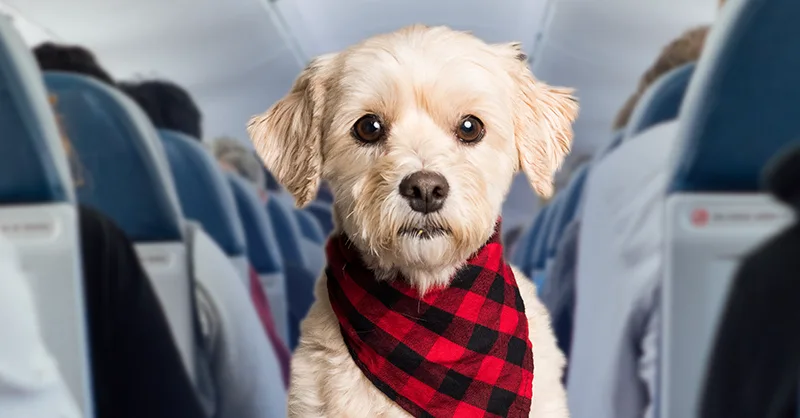
If you’re flying with a psychiatric service dog (PSD) for the first time, you may feel anxious, confused, ashamed, hesitant, or all of the above. That’s completely understandable. Flying with a psychiatric service dog for the first time can be intimidating, and it doesn’t help that the new travel rules for service dogs are tricky to understand. You may also need your PSD for a phobia or anxiety/panic disorder, and the uncertainty about what to expect doesn’t help.
In this article, we’ll tell you about:
- what you need to do to fly with your psychiatric service dog;
- what your privacy rights are;
- what airline staff can ask and what they cannot ask; and
- what to expect the first time going to an airport with a psychiatric service dog.
Once you know your rights and are familiar with PSD travel rules, you’ll be able to fly with your PSD confidently and without any surprises.
1. The Basics: Does Your Dog Qualify as a Psychiatric Service Dog?
Before you take any steps to fly with your psychiatric service dog, you’ll want to ensure your dog meets the legal criteria for being a service dog. If you’re already confident that you meet these qualifications, you can move on to the next section.
There are two basic criteria to qualify for a psychiatric service dog:
- Do you have a mental health disability?
- Has your dog been trained to perform tasks relating to that disability?
Is your mental or emotional health condition a disability?
Many potential conditions can qualify for a psychiatric service dog. PSD owners suffer from disorders like depression, severe anxiety, phobias, PTSD, bipolar disorder, autism, learning disorders, and panic disorders. If your mental health condition substantially limits at least one major life activity like sleeping, working, socializing, or going to school, you may have a disability that requires a service dog.
Still unsure? That’s okay; a licensed mental health professional should evaluate whether you meet the criteria. Some professionals offer signed PSD letters that will document your condition. This is especially helpful since you must self-certify that you have a “disability” on a federal form when you travel (more on that later).
Is your dog properly trained?
You don’t get to enjoy the benefits of being a service dog owner until your dog is fully trained. It must be trained to perform at least one task relating to your disability. Psychiatric service dogs can be versatile and take care of a lot of issues for their owners. A few examples:
- Remind their owner to take medication or perform a daily task.
- Interrupt sleep terrors.
- Disrupt self-destructive habits or dissociative episodes.
- Provide a calming effect by pawing, licking, nudging, hugging, or using pressure during moments of crisis, anxiety attacks, or panic attacks.
- Provide a buffer or perimeter around their owner in triggering situations.
Your PSD must also be trained to perform while being out in public. Your service dog should ideally have passed a public access test. Airports and flights can be stressful environments for dogs, and the noise, children, and other commotion can distract or scare them. You should be confident that your dog won’t jump on anyone, growl aggressively, relieve itself in inappropriate areas or run around uncontrolled.
2. What to Do During Booking and Before the Flight
If you’re flying with a psychiatric service dog to or from the U.S., there is only one document you need to fill out. All airlines accept the Department of Transportation’s Service Animal Air Transportation Form as proof that you have a psychiatric service dog.
Once you successfully submit this form, you can bring your dog into the cabin free of charge. They can sit on the floor or on your lap if they’re small enough. Larger psychiatric service dogs are allowed as long as they fit in your foot space.
The DOT Form requires you to self-certify that:
(i) you have a disability that requires a trained psychiatric service dog,
(ii) your dog will be under your control at all times and
(iii) your service dog has not exhibited aggressive behavior.
The DOT Form also requires information on your service dog’s trainer and veterinarian, which may be confusing:
- You may be your service dog’s trainer.
The DOT clearly states that you do not need a third-party trainer or organization. If you trained your psychiatric service dog on your own, as many people do, you can put yourself down as the trainer along with your phone number. It is very common for psychiatric service dog owners to self-train their dogs in the privacy of their homes. - Your veterinarian information is for reference only.
You need to list your veterinarian and indicate when your dog was vaccinated for rabies. However, your veterinarian does not need to sign the form. The only person that signs the form is you, the service dog owner.
When booking, most airlines have an option to make a special request for disability accommodation. You can also make this request when booking by phone. After booking your flight, your airline will share a link or an email address to submit your completed DOT Form.
Make sure you submit the form at least 48 hours before departure. If you book a flight within 48 hours, you can submit the form to an airline agent when you arrive at the airport. You will need to submit the form each time you book a flight (if you book a roundtrip flight, you can submit the form once). Some airlines may even keep your DOT Form on file for a year and give you an ID number that you can use for future bookings.
3. What to Expect at the Airport
Once you’re at the airport, you should check in with an airline agent and let them know your psychiatric service dog is with you. You should carry a copy of the DOT Form with you or on your phone in case they ask for it. The airline agent will check to make sure your DOT Form was properly completed and may also assess your dog (i.e., is it exhibiting any aggressive behavior, is it clean, or does it bark excessively).
Once you check in, you can proceed through security to your gate with your psychiatric service dog by your side. Be sure to have your dog on a harness, leash, or tether. You should not have your dog roaming off-leash even if it is capable of doing so.
Some items you should bring with you to the airport:
- Copy of the completed DOT Form
- A harness, leash, or tether.
- A pet carrier if your psychiatric service dog is small and prefers this (otherwise, they are free to sit on the floor or on your lap).
- Snacks and a portable water dish for your service dog.
- Your service dog’s favorite comfort item, like a blanket or toy.
- Pads and wipes in case your dog has an accident.
You may also want to use service dog accessories like ID cards, tags, vest, and harnesses. These items help inform other passengers that you are accompanied by a working animal and not a regular pet. They can also help airline staff identify your dog as a service animal. Many PSD owners like these accessories because they do not have to verbally inform people that they have a service dog.
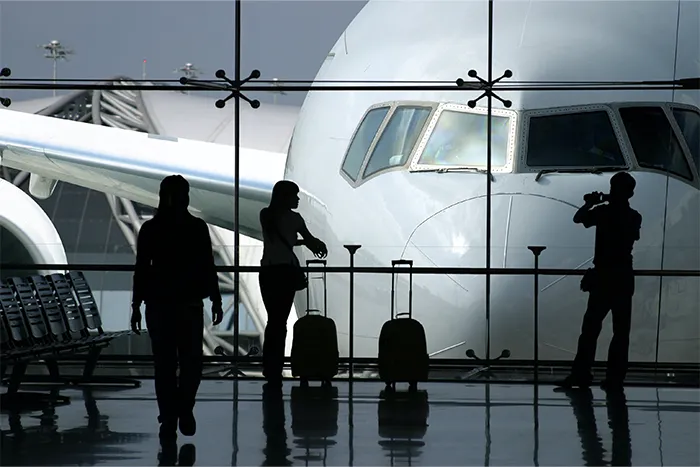
4. What Someone Can and Cannot Ask About Your Service Dog
Once you’re at the airport, you might be concerned about the attention you get by having a dog at your side. Many psychiatric service dog owners suffer from social anxieties or phobias and don’t like receiving additional attention from strangers. Fortunately, disability laws protect both your right to privacy and dignity.
If a fellow passenger asks questions about your health or your service dog’s function, you can choose not to respond. They have no right to question you about your need for a psychiatric service dog. It’s rare to encounter people like this, but if you do, just realize that they’re inappropriate, and you can choose to disregard them.
If an airline agent or flight staff asks to verify your psychiatric service dog, they are legally limited to two questions:
You just need to answer yes or no; there is no need to reveal anything about your mental health condition. Privacy laws protect that information.
You would just give the basics on what tasks your service dog performs. No one has the right to ask your dog to demonstrate the task.
Most psychiatric service dog owners need their dogs to perform tasks during their most vulnerable moments or in response to a traumatic or triggering event. It would be awful for anyone to require a psychiatric service dog owner to mimic these conditions. It would also be potentially traumatizing to do this in front of strangers. Air travel disability laws fully recognize this, and no one has the right to make your dog perform its task as proof that it has been task trained.
5. Additional Tips for Flying with Your Psychiatric Service Dog
If you’re flying with your psychiatric service dog for the first time, here are some additional tips to help calm your worries:
- Remember, your right to be accompanied by a psychiatric service dog is protected by federal law. Most airline employees and passengers are understanding of this and like seeing well-behaved dogs on flights. There’s no need to feel ashamed or embarrassed about your needs.
- Give your psychiatric service dog a chance to get a lot of exercise before a flight. That will help your service dog work off any excess energy and may help them sleep during the flight.
- Many airports have relief areas for pets. Research this in advance if you’re worried about your service dog having an accident.
- Make sure your service dog is prepared to sit on the floor or in your lap during the entire flight. Even if there’s an open seat next to you or space in the aisle, the airline will not let your dog rest in those places.
- Bring plenty of treats to give positive reinforcement for your service dog’s first time on a plane.
Remember that you have a right to privacy. Airline staff can only ask you two questions (as mentioned above), and other passengers don’t have the right to ask intrusive questions. In particular, owners of psychiatric service dogs often suffer from traumatic histories, and talking about their issues can be triggering – no one has a right to interrogate you about your mental health.
About the Author: The writing team at Service Dog Certifications is made up of folks who really know their stuff when it comes to disability laws and assistance animals. Many of our writers and editors have service dogs themselves and share insights from their own experiences. All of us have a passion for disability rights and animals.
14 comments
Leave a Reply Cancel reply
Latest Posts

How to Select Treats During Service Dog Training
The key to effective service dog training is matching your treats to the task: use high-value treats for teaching crucial skills like medical alerts or guide work, medium-value treats for practice sessions, and basic treats for everyday good behavior. There is an incredible variety of service dog tasks that help with qualifying disabilities, from acting […]

Read More

Can You Bring a Service Dog to a Grocery Store?
Yes! Service dogs can go into any grocery store with you, even if the store has a no-pets policy. It’s that simple: it’s your right under the Americans with Disabilities Act. If you can go somewhere in the store, your service dog can, too. In some cases, service dogs can even ride in the shopping […]

Read More
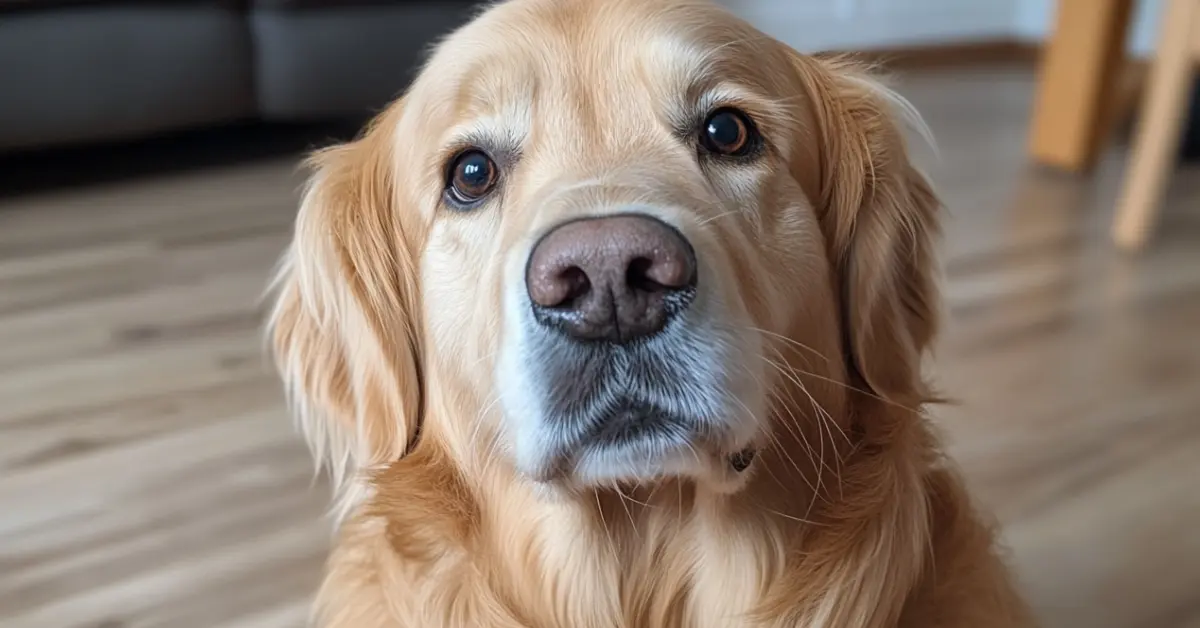
What to Know About Emotional Support Animals
Want a pet with special housing rights that can help with your anxiety, depression, or other mental health challenges? That’s exactly what emotional support animals do. Unlike trained service dogs, emotional support animals are regular pets — your dog, who gives you a reason to get out of bed when depression hits hard, or your […]

Read More
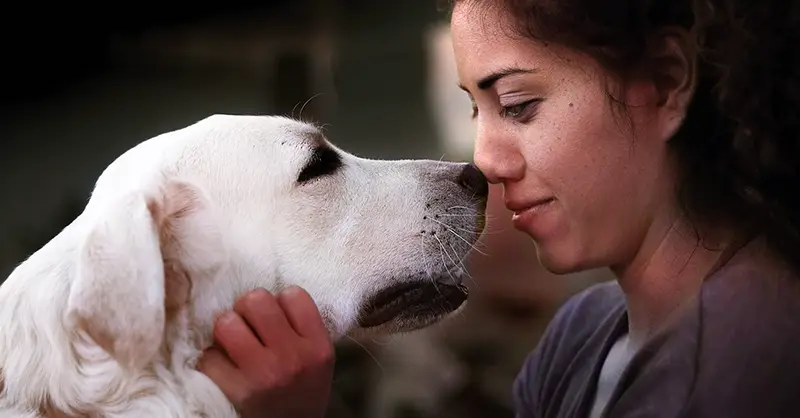
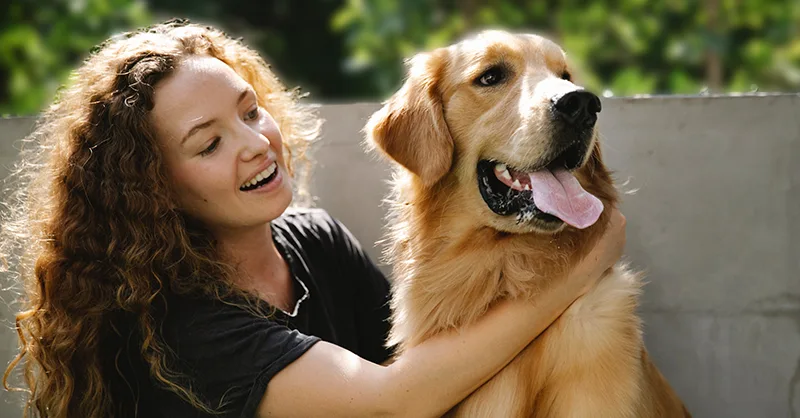

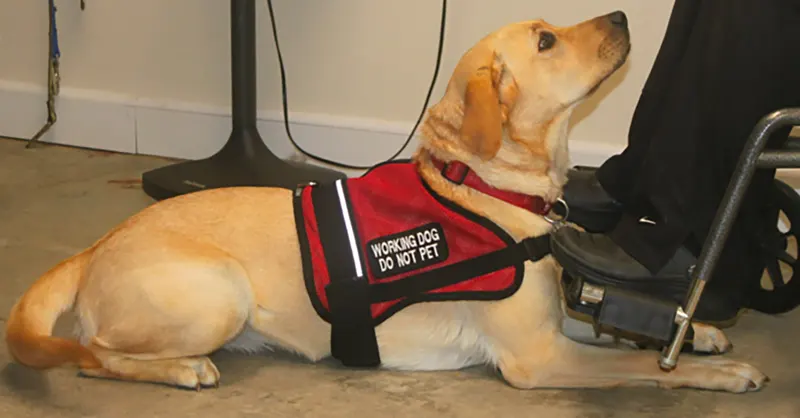

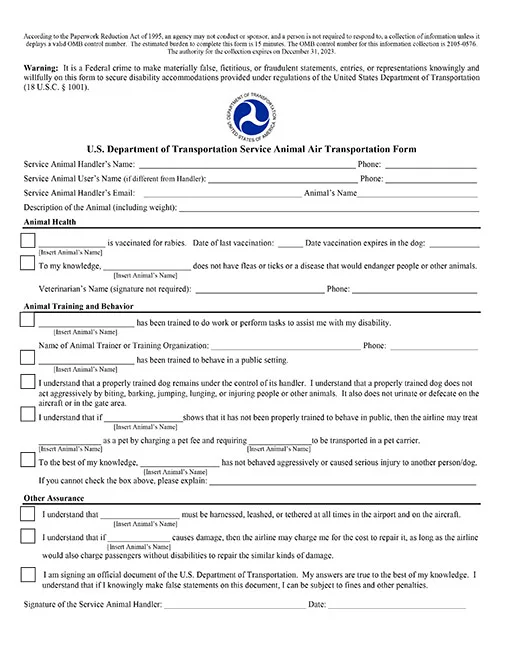
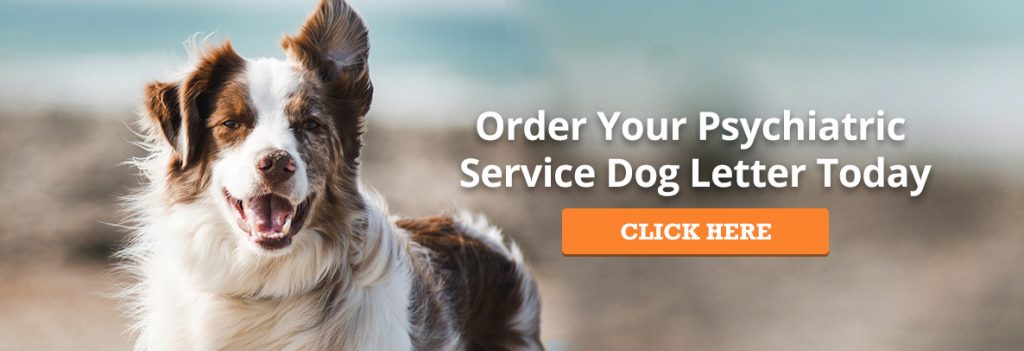

Where do I send the form and psychiatrist letter?
A psychiatrist letter does not need to be submitted to the airline. Please see this link for more info on the DOT’s form: https://www.servicedogcertifications.org/how-to-use-the-dots-service-animal-air-transportation-form-to-board-flights/
Is there a separate form for a psychiatric service dog, or is the safe form for a regular service animal? Should I indicate anywhere that it is a psychiatric service dog?
Please see this guide on filling out the DOT’s form: https://www.servicedogcertifications.org/how-to-use-the-dots-service-animal-air-transportation-form-to-board-flights/
My dog has gone through intense training and I am current;y preforming her final tasks as a PSD. Can I list myself as the trainer on the DOT form?
Under ADA rules you are allowed to self-train service dogs. Please see this link for a detailed guide on how to complete the DOT’s form for air travel: https://www.servicedogcertifications.org/how-to-use-the-dots-service-animal-air-transportation-form-to-board-flights/
if my dog is a psychiatric service dog do I have to list it as a service dog when purchasing the ticket?
Please see this article for more info on completing the DOT’s form for service dogs before a flight: https://www.servicedogcertifications.org/how-to-use-the-dots-service-animal-air-transportation-form-to-board-flights/
Are there max size requirements? I have a 1yr old PSD who is 55lbs. First time flying with her next month and I am certain she will fit at my feet but I have not found any proof indicating that her size is okay.
If your service dog is able to sit at your feet without encroaching on the aisle or your neighbor’s foot space, it should be okay. The flight attendants may also be able to move you to a seat where there is more room if space is available on the flight.
My service dog can sometimes get nervous/act anxious in the airport at check in, but once she is on the flight with me she sleeps right away. Her nervousness at the airport is only behavior such as panting, wide eyes, and kinda does a little jumscare if loud bang of big suitcase goes right past her (not an actual jump where she gets air, its more of a flinch). Will the airline question this behavior? She does not bark, urinate or act aggressive at all in these situations.
As long as your service dog is not being disruptive or causing any damage, that type of behavior should not be an issue.
What training and documents do I need in place once I’ve applied to my dog to be a PSD prior to our first flight. What other certificates, trainings or documents do I need to make sure I have completed before traveling?
The only document you need to complete to fly with a service dog is the DOT Service Animal Form. You can find instructions on how to complete this form here: https://www.servicedogcertifications.org/how-to-use-the-dots-service-animal-air-transportation-form-to-board-flights/